Tali Dekel
Eye2Eye: A Simple Approach for Monocular-to-Stereo Video Synthesis
Apr 30, 2025Abstract:The rising popularity of immersive visual experiences has increased interest in stereoscopic 3D video generation. Despite significant advances in video synthesis, creating 3D videos remains challenging due to the relative scarcity of 3D video data. We propose a simple approach for transforming a text-to-video generator into a video-to-stereo generator. Given an input video, our framework automatically produces the video frames from a shifted viewpoint, enabling a compelling 3D effect. Prior and concurrent approaches for this task typically operate in multiple phases, first estimating video disparity or depth, then warping the video accordingly to produce a second view, and finally inpainting the disoccluded regions. This approach inherently fails when the scene involves specular surfaces or transparent objects. In such cases, single-layer disparity estimation is insufficient, resulting in artifacts and incorrect pixel shifts during warping. Our work bypasses these restrictions by directly synthesizing the new viewpoint, avoiding any intermediate steps. This is achieved by leveraging a pre-trained video model's priors on geometry, object materials, optics, and semantics, without relying on external geometry models or manually disentangling geometry from the synthesis process. We demonstrate the advantages of our approach in complex, real-world scenarios featuring diverse object materials and compositions. See videos on https://video-eye2eye.github.io
DynVFX: Augmenting Real Videos with Dynamic Content
Feb 05, 2025



Abstract:We present a method for augmenting real-world videos with newly generated dynamic content. Given an input video and a simple user-provided text instruction describing the desired content, our method synthesizes dynamic objects or complex scene effects that naturally interact with the existing scene over time. The position, appearance, and motion of the new content are seamlessly integrated into the original footage while accounting for camera motion, occlusions, and interactions with other dynamic objects in the scene, resulting in a cohesive and realistic output video. We achieve this via a zero-shot, training-free framework that harnesses a pre-trained text-to-video diffusion transformer to synthesize the new content and a pre-trained Vision Language Model to envision the augmented scene in detail. Specifically, we introduce a novel inference-based method that manipulates features within the attention mechanism, enabling accurate localization and seamless integration of the new content while preserving the integrity of the original scene. Our method is fully automated, requiring only a simple user instruction. We demonstrate its effectiveness on a wide range of edits applied to real-world videos, encompassing diverse objects and scenarios involving both camera and object motion.
TokenVerse: Versatile Multi-concept Personalization in Token Modulation Space
Jan 21, 2025



Abstract:We present TokenVerse -- a method for multi-concept personalization, leveraging a pre-trained text-to-image diffusion model. Our framework can disentangle complex visual elements and attributes from as little as a single image, while enabling seamless plug-and-play generation of combinations of concepts extracted from multiple images. As opposed to existing works, TokenVerse can handle multiple images with multiple concepts each, and supports a wide-range of concepts, including objects, accessories, materials, pose, and lighting. Our work exploits a DiT-based text-to-image model, in which the input text affects the generation through both attention and modulation (shift and scale). We observe that the modulation space is semantic and enables localized control over complex concepts. Building on this insight, we devise an optimization-based framework that takes as input an image and a text description, and finds for each word a distinct direction in the modulation space. These directions can then be used to generate new images that combine the learned concepts in a desired configuration. We demonstrate the effectiveness of TokenVerse in challenging personalization settings, and showcase its advantages over existing methods. project's webpage in https://token-verse.github.io/
What Makes for a Good Stereoscopic Image?
Dec 30, 2024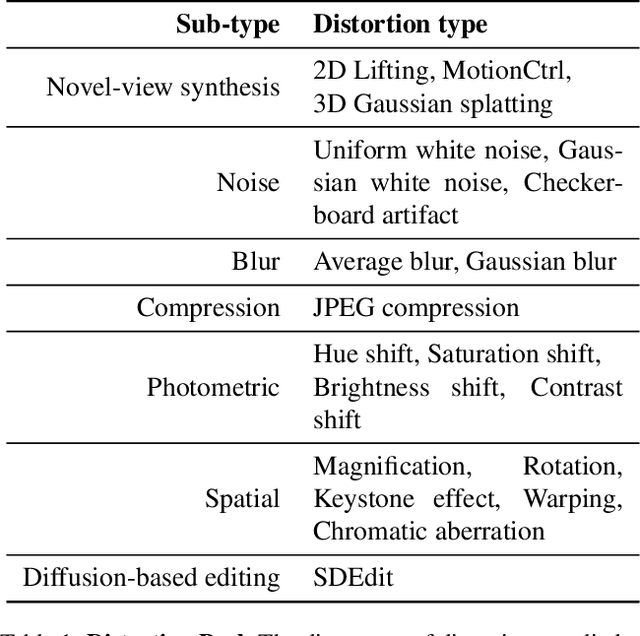
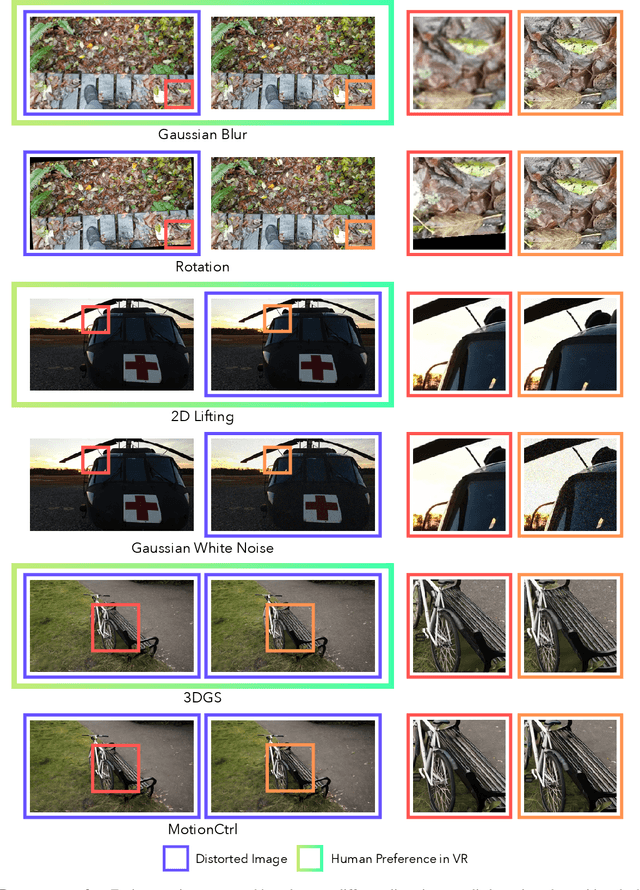
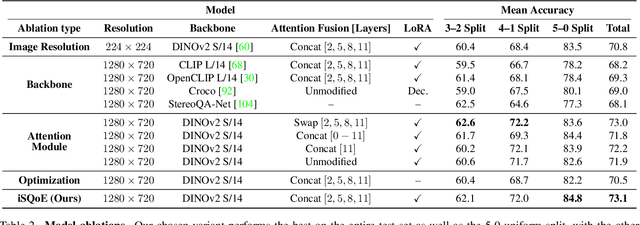
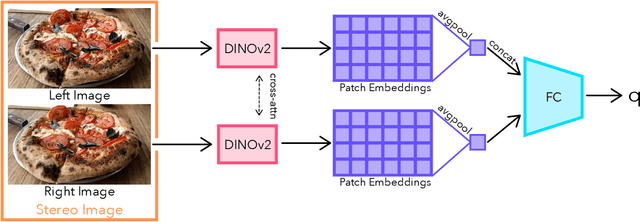
Abstract:With rapid advancements in virtual reality (VR) headsets, effectively measuring stereoscopic quality of experience (SQoE) has become essential for delivering immersive and comfortable 3D experiences. However, most existing stereo metrics focus on isolated aspects of the viewing experience such as visual discomfort or image quality, and have traditionally faced data limitations. To address these gaps, we present SCOPE (Stereoscopic COntent Preference Evaluation), a new dataset comprised of real and synthetic stereoscopic images featuring a wide range of common perceptual distortions and artifacts. The dataset is labeled with preference annotations collected on a VR headset, with our findings indicating a notable degree of consistency in user preferences across different headsets. Additionally, we present iSQoE, a new model for stereo quality of experience assessment trained on our dataset. We show that iSQoE aligns better with human preferences than existing methods when comparing mono-to-stereo conversion methods.
What's in the Image? A Deep-Dive into the Vision of Vision Language Models
Nov 26, 2024Abstract:Vision-Language Models (VLMs) have recently demonstrated remarkable capabilities in comprehending complex visual content. However, the mechanisms underlying how VLMs process visual information remain largely unexplored. In this paper, we conduct a thorough empirical analysis, focusing on attention modules across layers. We reveal several key insights about how these models process visual data: (i) the internal representation of the query tokens (e.g., representations of "describe the image"), is utilized by VLMs to store global image information; we demonstrate that these models generate surprisingly descriptive responses solely from these tokens, without direct access to image tokens. (ii) Cross-modal information flow is predominantly influenced by the middle layers (approximately 25% of all layers), while early and late layers contribute only marginally.(iii) Fine-grained visual attributes and object details are directly extracted from image tokens in a spatially localized manner, i.e., the generated tokens associated with a specific object or attribute attend strongly to their corresponding regions in the image. We propose novel quantitative evaluation to validate our observations, leveraging real-world complex visual scenes. Finally, we demonstrate the potential of our findings in facilitating efficient visual processing in state-of-the-art VLMs.
Generative Omnimatte: Learning to Decompose Video into Layers
Nov 25, 2024Abstract:Given a video and a set of input object masks, an omnimatte method aims to decompose the video into semantically meaningful layers containing individual objects along with their associated effects, such as shadows and reflections. Existing omnimatte methods assume a static background or accurate pose and depth estimation and produce poor decompositions when these assumptions are violated. Furthermore, due to the lack of generative prior on natural videos, existing methods cannot complete dynamic occluded regions. We present a novel generative layered video decomposition framework to address the omnimatte problem. Our method does not assume a stationary scene or require camera pose or depth information and produces clean, complete layers, including convincing completions of occluded dynamic regions. Our core idea is to train a video diffusion model to identify and remove scene effects caused by a specific object. We show that this model can be finetuned from an existing video inpainting model with a small, carefully curated dataset, and demonstrate high-quality decompositions and editing results for a wide range of casually captured videos containing soft shadows, glossy reflections, splashing water, and more.
VidPanos: Generative Panoramic Videos from Casual Panning Videos
Oct 17, 2024
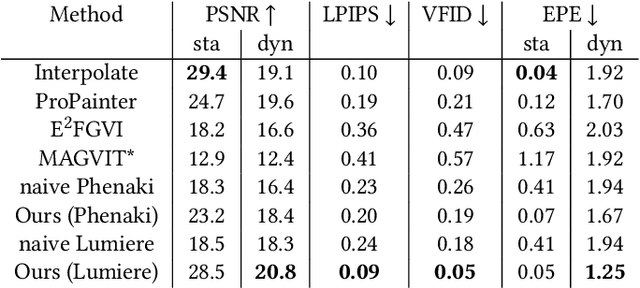
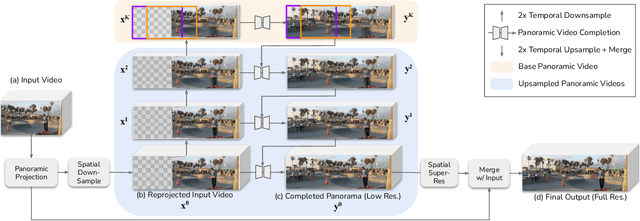

Abstract:Panoramic image stitching provides a unified, wide-angle view of a scene that extends beyond the camera's field of view. Stitching frames of a panning video into a panoramic photograph is a well-understood problem for stationary scenes, but when objects are moving, a still panorama cannot capture the scene. We present a method for synthesizing a panoramic video from a casually-captured panning video, as if the original video were captured with a wide-angle camera. We pose panorama synthesis as a space-time outpainting problem, where we aim to create a full panoramic video of the same length as the input video. Consistent completion of the space-time volume requires a powerful, realistic prior over video content and motion, for which we adapt generative video models. Existing generative models do not, however, immediately extend to panorama completion, as we show. We instead apply video generation as a component of our panorama synthesis system, and demonstrate how to exploit the strengths of the models while minimizing their limitations. Our system can create video panoramas for a range of in-the-wild scenes including people, vehicles, and flowing water, as well as stationary background features.
Still-Moving: Customized Video Generation without Customized Video Data
Jul 11, 2024

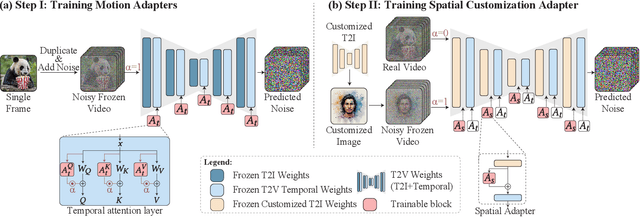

Abstract:Customizing text-to-image (T2I) models has seen tremendous progress recently, particularly in areas such as personalization, stylization, and conditional generation. However, expanding this progress to video generation is still in its infancy, primarily due to the lack of customized video data. In this work, we introduce Still-Moving, a novel generic framework for customizing a text-to-video (T2V) model, without requiring any customized video data. The framework applies to the prominent T2V design where the video model is built over a text-to-image (T2I) model (e.g., via inflation). We assume access to a customized version of the T2I model, trained only on still image data (e.g., using DreamBooth or StyleDrop). Naively plugging in the weights of the customized T2I model into the T2V model often leads to significant artifacts or insufficient adherence to the customization data. To overcome this issue, we train lightweight $\textit{Spatial Adapters}$ that adjust the features produced by the injected T2I layers. Importantly, our adapters are trained on $\textit{"frozen videos"}$ (i.e., repeated images), constructed from image samples generated by the customized T2I model. This training is facilitated by a novel $\textit{Motion Adapter}$ module, which allows us to train on such static videos while preserving the motion prior of the video model. At test time, we remove the Motion Adapter modules and leave in only the trained Spatial Adapters. This restores the motion prior of the T2V model while adhering to the spatial prior of the customized T2I model. We demonstrate the effectiveness of our approach on diverse tasks including personalized, stylized, and conditional generation. In all evaluated scenarios, our method seamlessly integrates the spatial prior of the customized T2I model with a motion prior supplied by the T2V model.
DINO-Tracker: Taming DINO for Self-Supervised Point Tracking in a Single Video
Mar 21, 2024Abstract:We present DINO-Tracker -- a new framework for long-term dense tracking in video. The pillar of our approach is combining test-time training on a single video, with the powerful localized semantic features learned by a pre-trained DINO-ViT model. Specifically, our framework simultaneously adopts DINO's features to fit to the motion observations of the test video, while training a tracker that directly leverages the refined features. The entire framework is trained end-to-end using a combination of self-supervised losses, and regularization that allows us to retain and benefit from DINO's semantic prior. Extensive evaluation demonstrates that our method achieves state-of-the-art results on known benchmarks. DINO-tracker significantly outperforms self-supervised methods and is competitive with state-of-the-art supervised trackers, while outperforming them in challenging cases of tracking under long-term occlusions.
Lumiere: A Space-Time Diffusion Model for Video Generation
Feb 05, 2024



Abstract:We introduce Lumiere -- a text-to-video diffusion model designed for synthesizing videos that portray realistic, diverse and coherent motion -- a pivotal challenge in video synthesis. To this end, we introduce a Space-Time U-Net architecture that generates the entire temporal duration of the video at once, through a single pass in the model. This is in contrast to existing video models which synthesize distant keyframes followed by temporal super-resolution -- an approach that inherently makes global temporal consistency difficult to achieve. By deploying both spatial and (importantly) temporal down- and up-sampling and leveraging a pre-trained text-to-image diffusion model, our model learns to directly generate a full-frame-rate, low-resolution video by processing it in multiple space-time scales. We demonstrate state-of-the-art text-to-video generation results, and show that our design easily facilitates a wide range of content creation tasks and video editing applications, including image-to-video, video inpainting, and stylized generation.
 Add to Chrome
Add to Chrome Add to Firefox
Add to Firefox Add to Edge
Add to Edge